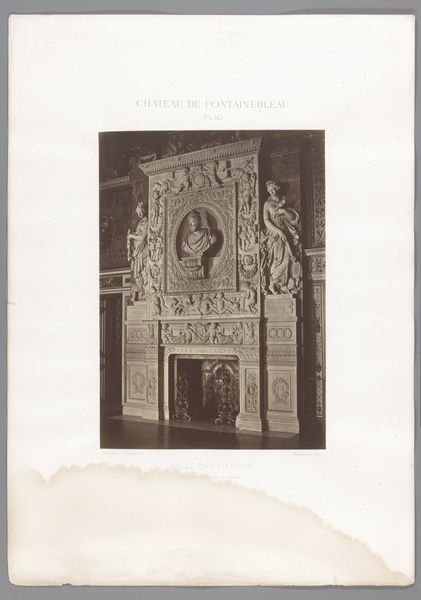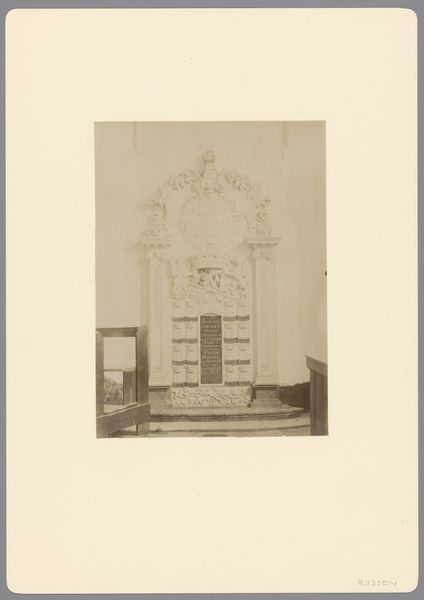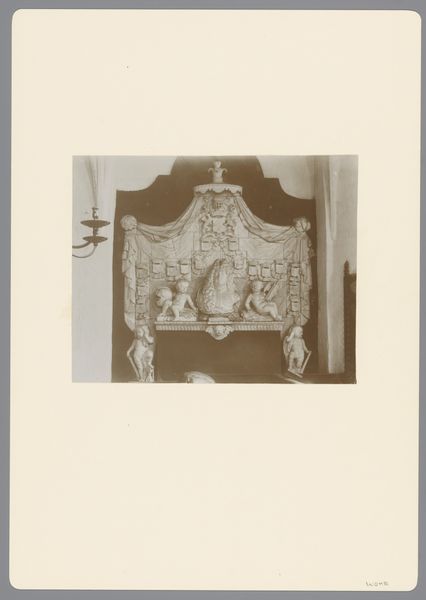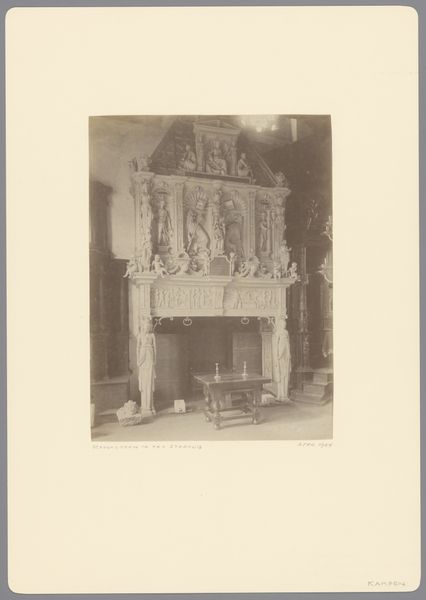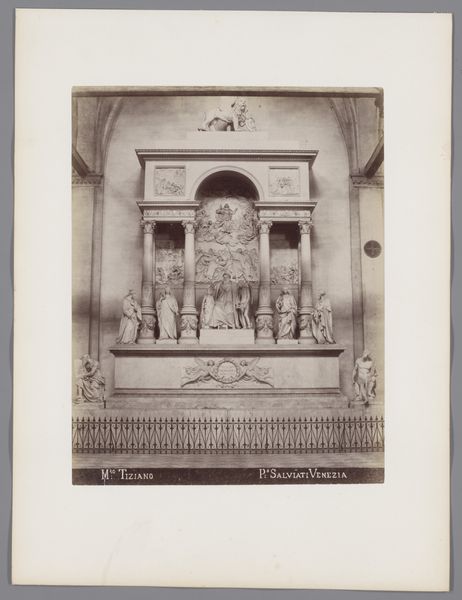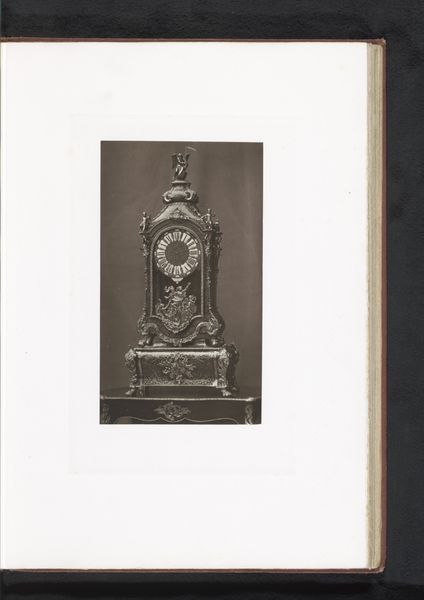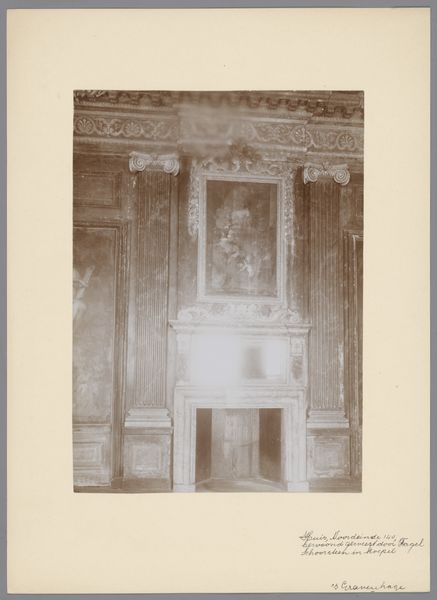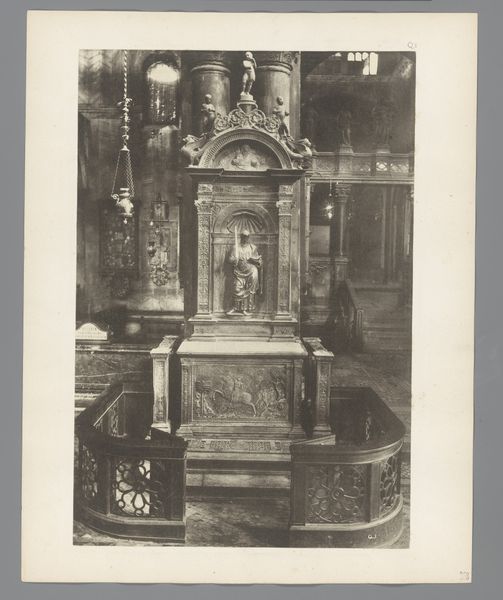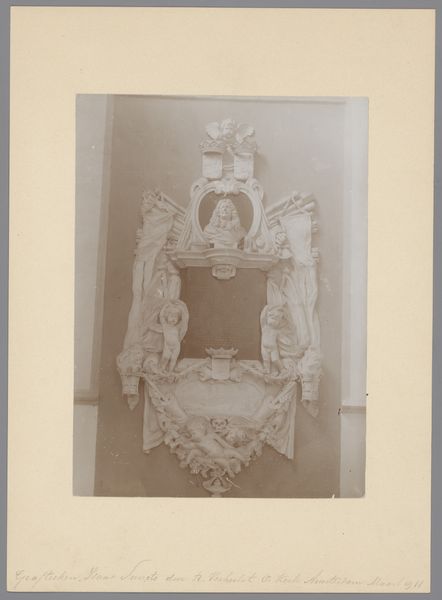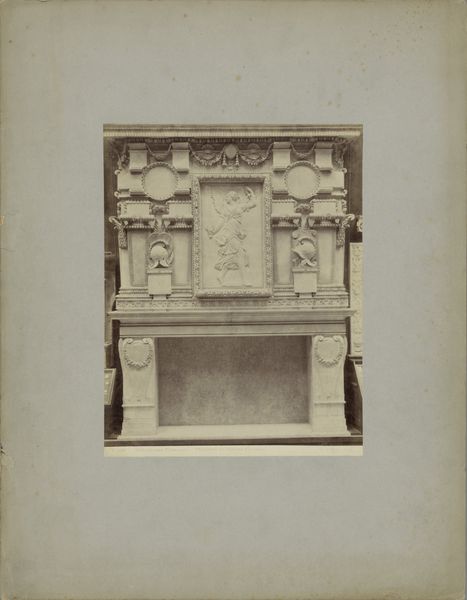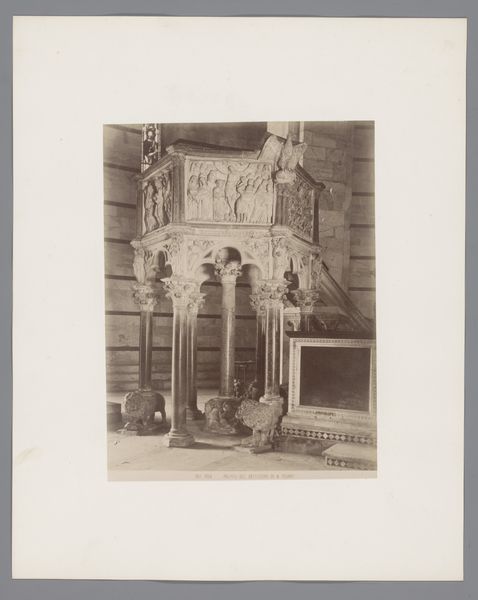
Ingang van het grafmonument van Michiel de Ruyter in de Nieuwe Kerk te Amsterdam 1911
0:00
0:00
Dimensions: height 221 mm, width 161 mm
Copyright: Rijks Museum: Open Domain
Curator: Here we see an image from 1911 of the entrance to the tomb monument of Michiel de Ruyter in the Nieuwe Kerk in Amsterdam. Editor: It has an undeniably somber feeling. The grayscale and formal composition immediately convey a sense of historical weight and reverence. The craftsmanship looks ornate, despite the subdued palette. Curator: Indeed. This photograph invites questions about its making. The texture of the monument, captured through light and shadow, points to the deliberate act of documentation. Considering that Monumentenzorg—the Dutch heritage organization—is credited, we might explore their process in preserving national identity. What material practices and conservation efforts are evidenced here? Editor: Beyond materiality, I'm also intrigued by how public grief is performed. Who was Michiel de Ruyter? Was the creation and display of his monument meant to affirm specific nationalistic values at a pivotal point in Dutch history, just before the World Wars? It seems essential to remember that representations are not neutral. Curator: I'm curious to consider this from the perspective of labor too. Who carved these stones? What does it tell us about class divisions? Editor: And who had the power to commission the initial monument? Considering De Ruyter's role as an admiral, the image could also be situated within a broader reflection of maritime history and colonial dynamics of that time. Who benefited and suffered from De Ruyter's endeavors? Curator: I am compelled to look more closely at the physical monument. How has it aged, and been cared for? Can examining its conservation give a sense of social value over time? Editor: It feels critical that we use history as a way to reflect on power dynamics that are embedded in all cultural products. It provides new lenses with which to approach monuments today, including challenging problematic or forgotten colonial pasts. Curator: Absolutely. The photo offers a valuable reminder of how art is so tightly linked to both materials and memories. Editor: An exercise in memory, power, and reflection all framed within one somber photographic document.
Comments
No comments
Be the first to comment and join the conversation on the ultimate creative platform.
